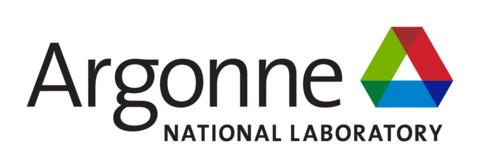Improving Next-Generation Aircraft With Argonne’s Aurora Supercomputer and AI
Improving Next-Generation Aircraft With Argonne’s Aurora Supercomputer and AI
LEMONT, Ill.--(BUSINESS WIRE)--With unprecedented capabilities for simulation and artificial intelligence, the Aurora supercomputer at the U.S. Department of Energy’s (DOE) Argonne National Laboratory is helping researchers explore new ways to design more efficient airplanes.
As one of the world’s first exascale supercomputers, Aurora is capable of performing over a quintillion calculations per second. Housed at the Argonne Leadership Computing Facility (ALCF), a DOE Office of Science user facility, it also ranks as one of the top systems for AI performance. A team led by researchers at the University of Colorado Boulder is using Aurora’s exascale computing power, along with advanced machine learning techniques, to study airflow around commercial aircraft, providing insights to inform the design of next-generation airplanes.
Traditionally, airplanes are designed to handle worst-case scenarios, such as taking off in a crosswind with one engine out. As a result, airplanes often have vertical tails larger than is needed for most flights.
“The vertical tail on any standard plane is as large as it is precisely because it needs to be able to work effectively in such a situation. The rest of the time, however, that vertical tail is larger than would be necessary, thus adding unnecessary drag and fuel consumption,” said Riccardo Balin, ALCF assistant computational scientist. “Our team thought that if we could understand the physics of the flow better, we could design a smaller tail that’s still effective in worst-case-scenario conditions.”
The team is using Aurora to run large-scale fluid dynamics simulations with HONEE, an open-source solver designed to model the complex and chaotic behavior of turbulent airflow. Their high-fidelity simulations generate training data to develop machine-learning-driven subgrid stress models, which are a key part of turbulence models used in lower-resolution simulations.
Developing improved subgrid stress models can significantly reduce simulation costs while maintaining high fidelity. Ultimately, the team’s approach aims to reduce the need for costly wind tunnel and flight tests.
Traditional turbulence models rely on extensive stored datasets and slow offline analysis. The team’s new method employs “online” machine learning during the simulation itself, saving time and bypassing the need to store massive amounts of data.
Using this technique, the team is building smarter models that can predict the behavior of turbulent air, especially in challenging conditions where traditional models struggle.
By combining Aurora’s exascale computing power with these innovative tools, the team is transforming how aircraft can be designed and tested in a virtual environment, speeding up the development of next-generation aircraft while reducing the need for expensive and time-consuming physical tests.
Contacts
Christopher J. Kramer
Head of Media Relations
Argonne National Laboratory
Office: 630.252.5580
Email: media@anl.gov
